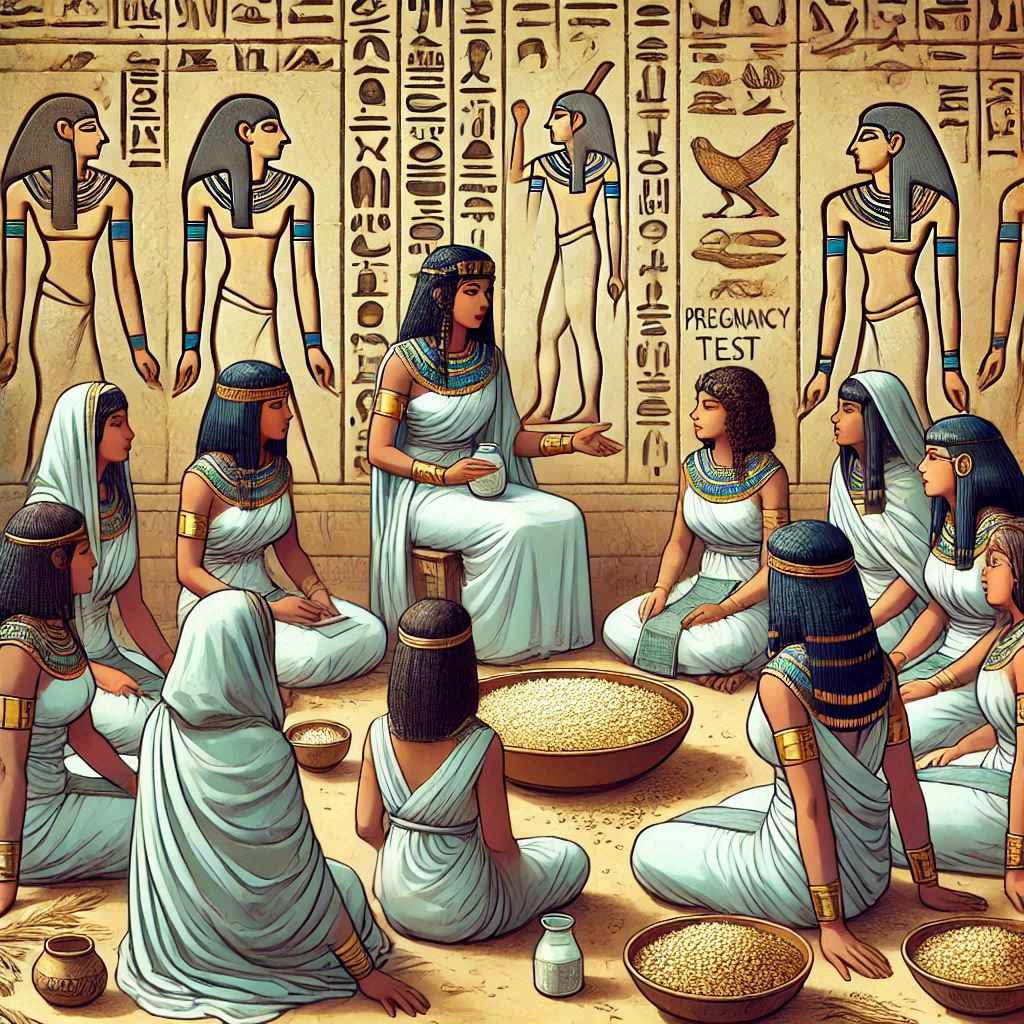For centuries, the mysteries of ancient Egypt have captivated the world. From monumental pyramids to advanced medical practices, the ancient Egyptians were pioneers in many areas. But did you know they had a pregnancy test over 3,000 years ago? This groundbreaking method, detailed in ancient papyri, reveals just how innovative and resourceful this civilization truly was. Let’s dive into the fascinating world of ancient Egyptian medicine and uncover the secrets of their pregnancy testing techniques.
The Science Behind the Ancient Egyptian Pregnancy Test
The ancient Egyptian pregnancy test was surprisingly scientific for its time. Recorded in the Kahun Gynecological Papyrus—one of the oldest medical texts in history—this method involved a combination of barley and emmer wheat seeds.
How It Worked
1. The Process:
A woman suspected of being pregnant would urinate on a mixture of barley and emmer wheat seeds over several days.
2. The Results:
If the barley sprouted, it was believed the woman was carrying a boy.
If the emmer wheat sprouted, it indicated a girl.
If neither sprouted, the woman was not pregnant.
This test wasn’t just a myth; modern studies suggest it may have had some biological basis. Hormones in a pregnant woman’s urine, such as estrogen, could promote seed germination, making this method remarkably accurate for its time.
---
Why This Method Was Revolutionary
At a time when medical practices were largely based on superstition, this test stands out for its practical approach. It combined observation with experimentation, showcasing the Egyptians' understanding of natural processes.
Connection to Modern Medicine
The principles behind this ancient test mirror modern pregnancy tests, which detect hormone levels to determine pregnancy. While today’s methods are far more advanced, the ancient Egyptians laid the groundwork for what would become a fundamental medical tool.
---
The Role of Women in Ancient Egyptian Medicine
Women’s health was a priority in ancient Egypt, and midwives and female healers often played crucial roles in society. The documentation of pregnancy tests in their medical papyri highlights their commitment to understanding and addressing women’s health issues.
---
The Significance of the Kahun Papyrus
The Kahun Gynecological Papyrus not only details the pregnancy test but also provides insights into ancient Egyptian medicine, including treatments for fertility and gynecological issues. This text demonstrates how advanced and organized their medical knowledge was, even compared to later civilizations.
---
Unraveling the Legacy of Ancient Egyptian Medicine
The ancient Egyptian pregnancy test is just one example of their ingenuity. Their contributions to medicine—ranging from surgical techniques to herbal remedies—have influenced medical practices for millennia.
---
Did It Really Work? Modern Studies Say Yes
A study conducted in the 20th century tested the effectiveness of this ancient method. Researchers found that urine from pregnant women did promote seed germination, validating the logic behind the test. Although it’s not 100% reliable by today’s standards, it’s a testament to the Egyptians’ resourcefulness and observational skills.
---
Conclusion
The ancient Egyptian pregnancy test is a testament to the brilliance of one of history’s most advanced civilizations. Their understanding of biology and experimentation paved the way for modern science. As we continue to study their methods, we gain a deeper appreciation for the innovation and resourcefulness of the ancient world.




